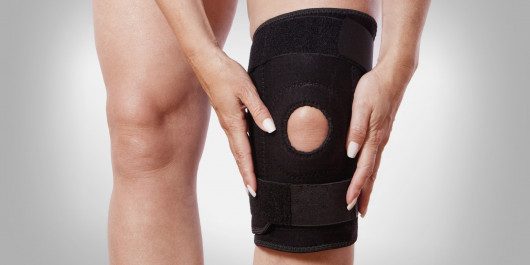Unstable kneecaps or patellar instability is when the kneecaps get knocked out or displaced from its place. There are different causes for its dislocation and this condition affects about seven out of 100,000 people in the U.S, according to the American Physical Therapy Association.
Dislocation often occurred when partaking in exercise and sports, and even daily activities such as gardening or scrubbing. When a person suffers patellar kneecaps, he or she will likely experience it again. A whopping 15 to 45 percent of the injured people (adolescents) will have another episode of unstable kneecaps in their lives.
Causes of Unstable Kneecaps

There are plenty of implicating factors that cause patellar instability. Some possible explanation includes a shallow groove, abnormalities in the bone structure, poor posture, and muscle weakness.
Shallow Groove
The kneecap rests on the trochlea (femoral groove) at the end of the thigh bone. A normal kneecap will fit nicely on the groove. But a shallow one will have your kneecap slide off.
Poor Posture and Movement
Activities, where the knee is often placed on a strenuous and bad position, can have the kneecaps dislocated and move from side to side. Exercise, sports, or even daily situations like picking up items on the floor can cause stress on the knees if done with poor posture.
Using the Wrong Footwear
Footwear can dictate how you walk. The wrong shoes can make you walk in a very uncomfortable way and you’ll find a way to adjust and dictate the knees on how it’s going brace itself while being in pain. That will add stress to your kneecaps, which in turn, can cause patellar instability.
Weak Muscles and Tissues
When the muscles and tissues themselves are stressed or traumatized, they can loosen up their hold of the kneecaps and groove and would slip it, thus, implicating an unstable kneecap. Other times, when the muscles and ligaments become too tight, they pull the kneecap from its place also.
Injuries
An accident like a fall or hit can cause fracture and dislocation of the knee. Such injuries can traumatize the knee region and cause the groove to loosen the hold of the kneecaps.
Conditions
Knee arthritis, Jumper’s knee, and even Plica Syndrome cause knee pain and unstable kneecaps. These conditions are heavily characterized by inflammation in the region which makes the muscles swollen and sore.
Birth
In some cases, people have knocked knees since they were born. They have to live with this kind of stigma unless they have it checked or operated by a specialized doctor.
When you’ve determined the cause of your unstable kneecaps, doctors can recommend the right treatments for you. Individuals who have patellar instability experience symptoms that limit their ability to move and perform daily tasks.
Symptoms of Unstable Kneecaps

Have you tried moving your knees and hear those popping sounds? Your cracking knee is one of the few signs that you’re experiencing this malady. Other symptoms of a dislocation are:
- Feeling the kneecaps slide off to the sides
- Popping, creaking, or crackling sounds
- Swelling and soreness of the knees
- A buckling knee that has a hard time supporting your weight
- Pain in the knee when you bend, walk, straighten your legs or sit down
- Stiffness and weakness of the knees
Remember, when the kneecap becomes partially dislocated, it’s called subluxations. Even so, it’s important to see a doctor for your treatment.
Treatments for Patellar Instability
Doctors prescribed the appropriate treatment depending on the severity of the problem. First, your doctor will be performing a series of physical and diagnostic examinations like x-rays, walk tests, and some measurements.
During your first injury or patella instability episode, you need to ice and compress it. Take the RICE method where you rest, ice the area, compress the kneecaps, and elevate the leg. Depending on the severity of the pain, you can put protective knee braces for support and compression.
Calling for professional help is also needed, especially when the problem persisted and where corrective surgery is needed to take place. For subluxations, your doctor might recommend non-surgical options like physical therapy such as massage, biking, walking, wearing knee braces, and more.
How to Prevent Unstable Kneecaps from Happening?

Maintaining appropriate usage of your knee strength during activities can reduce your chances of suffering patellar instability. Here are some methods where you can prevent the risk of knee injury.
Wear the Right Shoes
What shoes can make you feel comfortable? If you need a particular footwear for an activity but aren’t too comfortable with it, you can place soles, socks, or other protection. Additionally, when you’re exercising, playing sports, or going in the outdoors, wearing rubber shoes or other sports shoes are needed to help stabilize your footfalls.
Do Warm-ups
Before jumping into the action, you can do leg exercises that keep your thigh muscles flexible and strong. For example, lunges or hamstring stretch might help.
Wear Protective Gear
If your activity requires you to do heavy knee use, you can wear a protective kneepad to minimize the risk of injury. Whether it’s for sports play or simple gardening, donning the gear can save your knees on the long run.
Rest if You Feel Pain and not General Soreness
There’s a difference between pain and soreness when you exercise or do a strenuous activity with your knees. If you feel an unusual pain, it’s best to pause and take a rest.
Stay on a Healthy Weight
When you’re obese, you’re causing so much stress on your knees as it holds you off for balance. Having an unhealthy weight can also cause your organs, muscles, and tissues to break down due to depletion of nutrients that keep them functioning. If you have some issues with your weight, these 7 weight loss tricks will help you change your physic.
Kneecap instability can be normal or chronic for some people. Nevertheless, it’s a condition you just can’t leave unattended by doctors or therapists. Correction of unstable knees can be done in a surgical or non-surgical treatment depending on the severity of the case. However, we still believe that prevention is the best cure.
If you can take heed of these simple tips, you might find your kneecaps in good condition and on the track.
Bio
Abby Ann is a fitness enthusiast who advocates safety in exercise after experiencing an accident in 2004. She now co-found the shop, Bodyprox USA to spread the awareness of injury protection.



